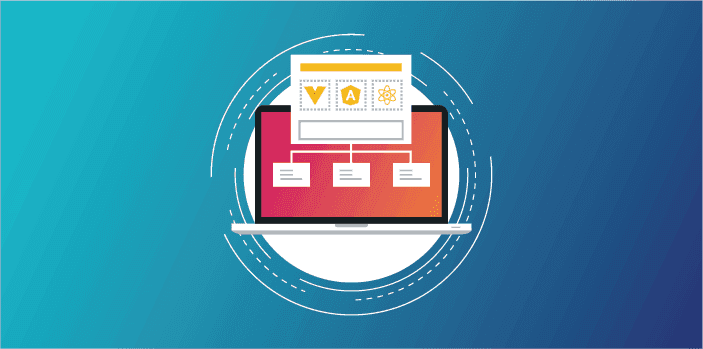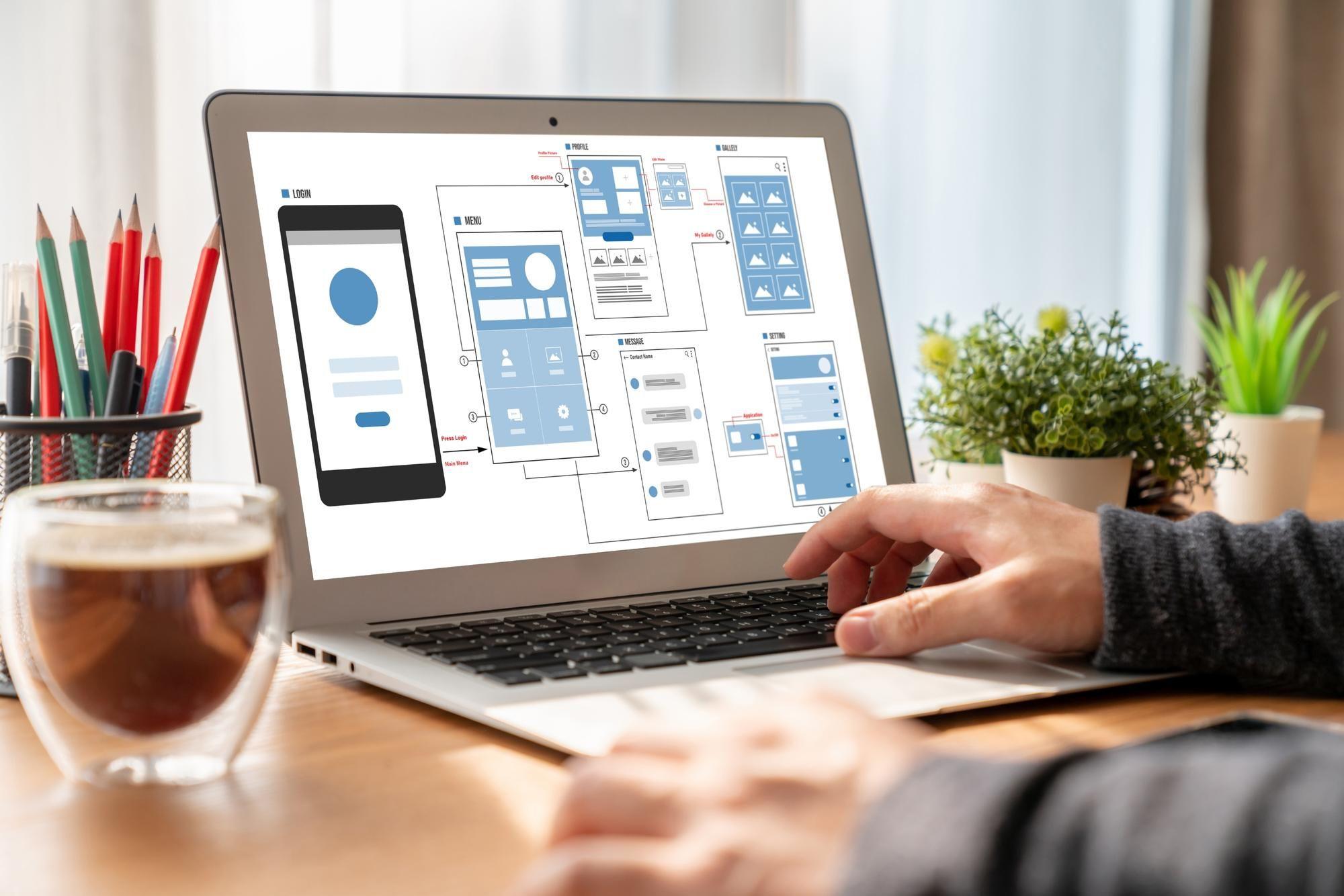Software Architecture Patterns: Driving Scalability and Performance
The world's most popular streaming giant, Netflix, faced a major breakdown in 2008, causing several days of downtime. Between 2001 and 2008, Netflix subscribers ballooned from 400 thousand to 9.16 million, recording a remarkable rise of 2190%. But this boon became a bane due to the software's inability to handle the massive user base. Thankfully, their swift recognition helped them migrate to a scalable architecture.
Tech giants like Amazon, eBay, and Uber encountered similar issues. They struggled to scale and failed to support a growing consumer base because of a tightly coupled software architectural pattern. They all migrated from traditional monolithic architectures to microservices architectures. However, migration is complex, and it takes time. That's why choosing the right software architecture pattern to support your business growth and future goals is essential.
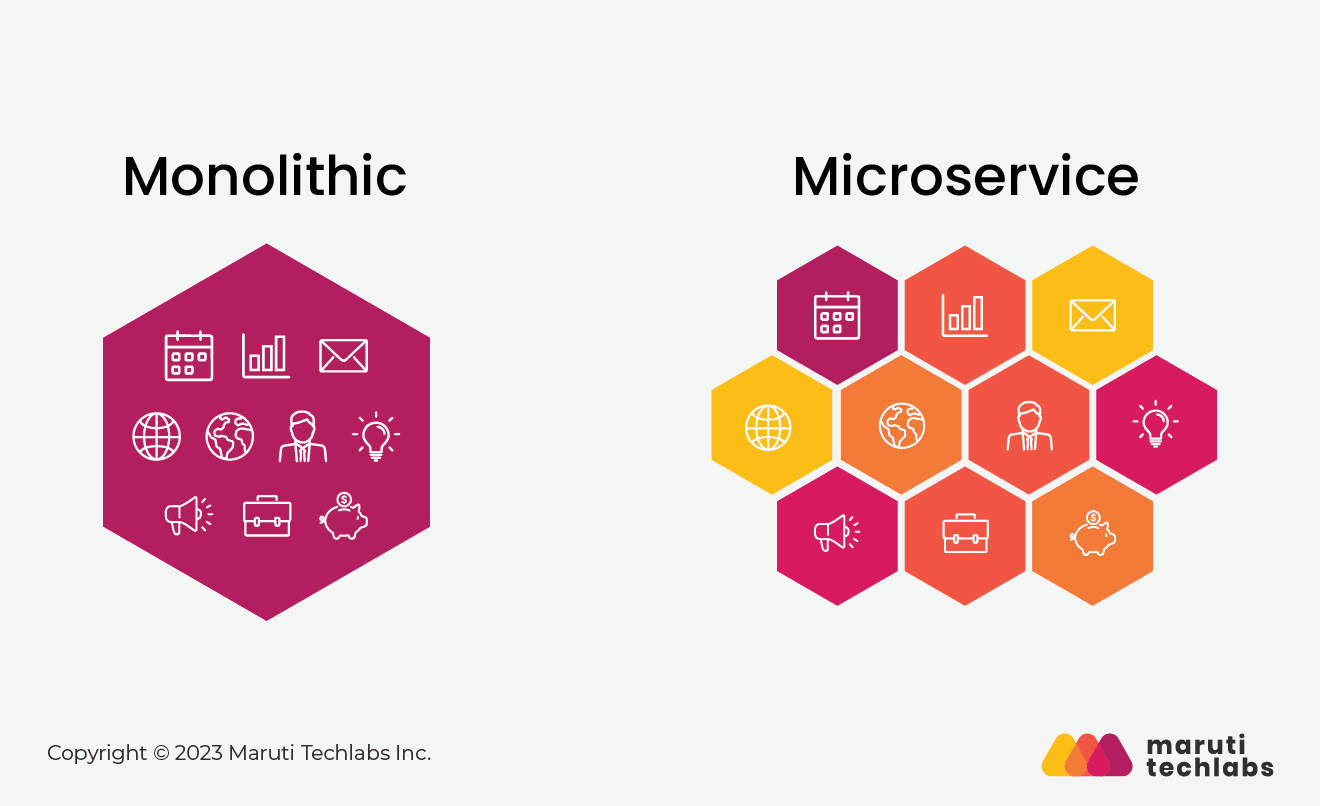
The truth is software scalability and performance have become critical factors in today's digital landscape, where businesses constantly strive for rapid growth. They need applications that can support an unprecedented spike in load without compromising performance. To achieve this, laying the right software architectural pattern is paramount.
At Maruti Techlabs, we understand the importance of laying the right architectural foundation for your application. The right software architecture pattern is the cornerstone for building robust, secure, scalable, and successful software solutions. Our product management consulting services have helped many businesses build scalable, flexible, and robust applications that can withstand time while supporting their growing needs.
What is an Architectural Pattern? Why is It Important?
In broad terms, architecture is the foundational design that outlines various elements, including its layout, resources, components, and functionalities. All these elements play a crucial role in creating a sustainable framework that can meet the evolving needs of users.
Whether building society or software, you need a robust architectural design to create functional and futuristic ecosystems that can withstand disaster. However, developers often have to deal with repetitive requirements or obstacles. That's where an architectural pattern comes into play!
An architectural pattern is a general, reusable solution to a commonly recurring problem. A software architectural pattern provides a high-level structure for the software, its components, and their interactions to achieve the desired functionality.
Depending on the architectural pattern, you make important decisions regarding its overall structure, relationships between components, data flow patterns, and the mechanism for communication between different parts of the system. In other words, it serves as the backbone of your software.
Importance of Software Architecture
The importance of software architecture cannot be overstated. A solid architectural pattern is a bedrock for building reliable and scalable software that can perform under challenging circumstances. It provides a roadmap for the development team, guiding them in making key decisions about the system's design and implementation. Without the right architecture, software projects are prone to issues like poor performance, difficulty in maintenance, and an inability to adapt to changing requirements.
Here are some of the reasons that make software architecture patterns vital for developing sustainable applications:
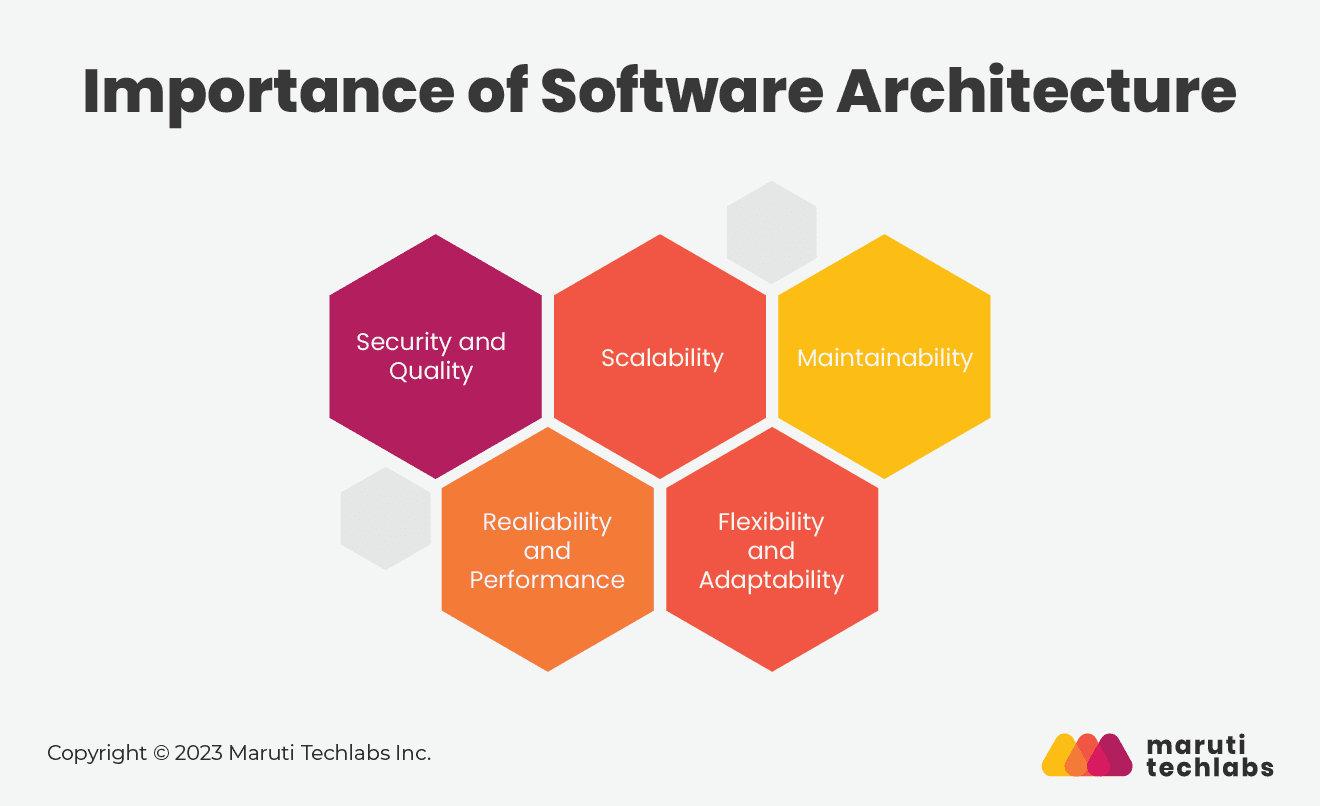
1.Scalability
Remember how Netflix was once on the verge of collapsing because it could not handle the overwhelming load? That's why you must choose a well-designed architectural pattern that provides a scalable structure for the software system. It allows the system to handle increasing loads while maintaining peak performance. With the right architecture, your software can support adding new features or components without disruption.
2.Maintainability
The right architectural pattern makes it easy for the developer to develop, test, deploy, and maintain the software while minimizing the risks. Most modern architecture promotes loose coupling, which makes it easier to understand, modify, and maintain the software system over time. Changes in one component of the system have minimal impact on other parts. It makes adding new features or modifying the software much easier.
3.Flexibility and Adaptability
Software applications undergo numerous iterations during the development and production cycles. That's why choosing an architectural pattern that provides flexibility and agility is important. It enables easy integration and replacement of components, enabling the software to stay relevant and up-to-date.
4.Reliability and Performance
The right architectural pattern considers factors like performance, fault tolerance, scalability, and dependability. It helps ensure the software system performs reliably, efficiently, and consistently under varying conditions.
5.Security and Quality
A well-designed architecture can enhance the security of your software by manifolds. The design layout helps you identify potential vulnerabilities and the chances of data breaches at a very early stage. You can thus plan better to mitigate risks and loopholes in the project. Also, developers can build a secure and reliable system by incorporating security best practices into the architecture.
Difference Between Software Architecture and Design Patterns
The terms software architecture and design patterns are often used interchangeably. However, there is a slight difference between the two. Architecture patterns address higher-level concerns and provide a framework for organizing the system, while design patterns offer solutions to specific design challenges within that framework.
Here is a detailed outlook on software architecture pattern vs design pattern:
Key Differentiations | Software Architecture Patterns | Design Patterns |
| Scope | Software architecture is decided in the design phase. | Design Patterns are dealt with in the building phase. |
| Abstraction | Software architecture is like a blueprint - a high-level idea of the data flow, components, and interactions between them. | A more detailed design pattern focuses on solving specific design problems within a component. |
| Granularity | It provides a broad view of the system and addresses large-scale components and their interactions. | A design pattern addresses small-scale design issues within a component or a class. |
| Reusability | An architectural pattern can be reused across different projects with similar requirements. | It can be reused within the same project to solve recurring design problems. |
| Relationship | It defines the overall structure, and communication patterns, and organization of components. | It solves common design problems like object creation, interaction, and behavior. |
| Time of Application | An architectural pattern is implemented at a very early stage of the SDLC. | A design pattern is implemented during the coding phase of software development. |
| Examples | Layered Architecture, Client-Server Architecture, Microservices, MVC, etc. | Singleton, Factory Method, Observer, Strategy, etc. |
9 Types of Software Architecture Patterns
There are various types of software architecture, each addressing specific design challenges and providing solutions for organizing and structuring software systems. Architects and developers can choose and combine patterns based on their particular project requirements and goals.
Here are some commonly recognized types of software architecture patterns -
Layered Pattern
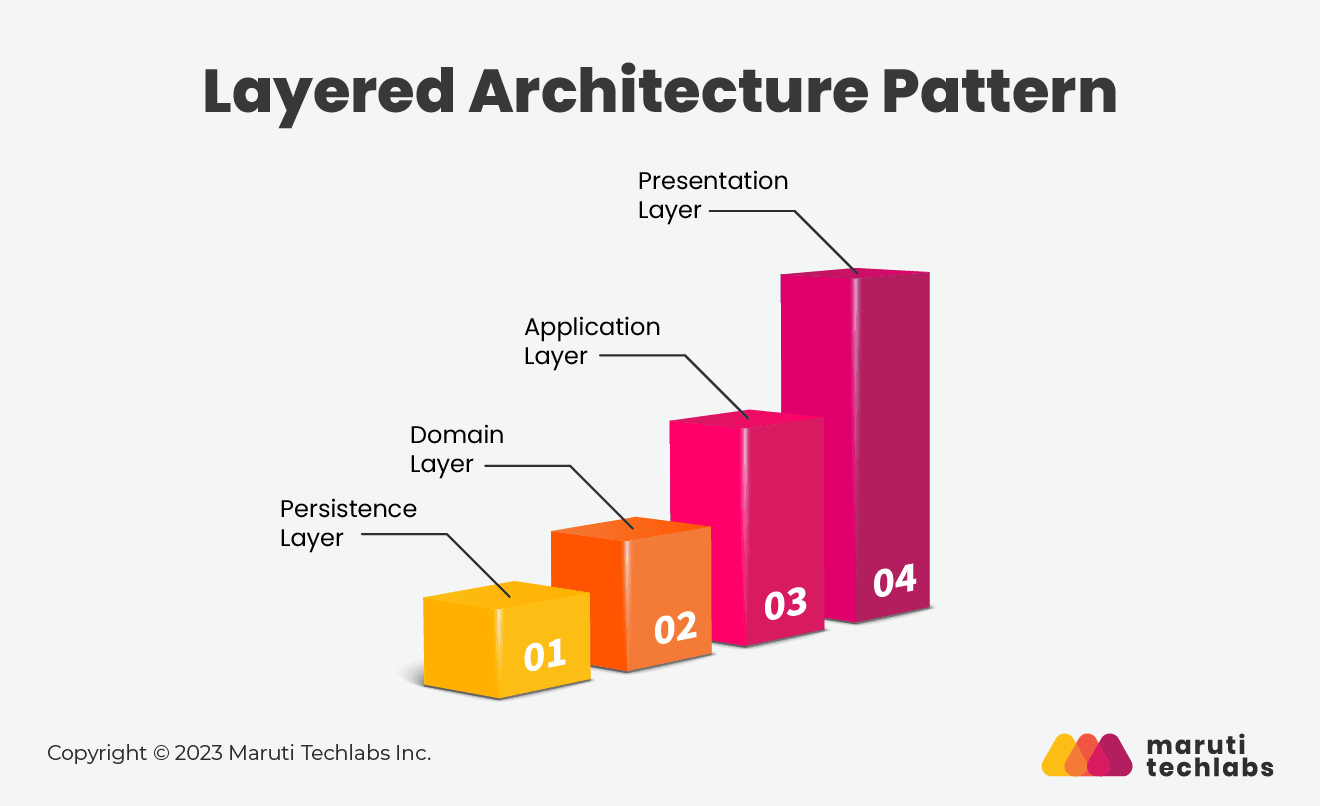
The layered pattern is one of the most frequently used software engineering architecture. The components are arranged in horizontal layers, where one component sits on top of another.
Usage of Layered Architecture Pattern
- A layered architecture enables easy testability and faster deployment.
- It is best suited for small applications with tight time and budget constraints.
- It is often employed in businesses operating on traditional IT structures.
- It is best suited for creating apps requiring strict maintainability and testability standards.
Advantages of Layered Architecture Pattern
- This architecture ensures loose coupling between the layers, thus enabling easy maintenance, testing, and flexibility.
- The layers can be scaled individually to accommodate system requirements or user load changes.
- Each layer encapsulates its functionality, hiding the implementation details from other layers.
Disadvantages of Layered Architecture Pattern
- Agility, scalability, deployment, and performance can be challenging.
- Layered architecture requires communication between all layers. Skipping the layers can lead to a complex, logical mess.
- In a layered architecture, the flow of data and processes through each layer can impact performance.
- Layered architecture is only suitable for some complex or evolving systems.
Event-driven Architecture

An event-driven architecture pattern revolves around "event" data. The system is made of decoupled components that asynchronously receive and process events. This system's flow of information and processing is based on circumstances.
Usage of Event-driven Architecture
- Complex apps that demand seamless data flow
- Real-time processing, like streaming analytics
- Event-driven flow management
- IoT and reactive systems
- Best suited for E-commerce, telecommunications, logistics, etc
Advantages of Event-driven Architecture
- Loose coupling between components enables independent development.
- Asynchronous communication enables systems to handle a high volume of events.
- New components can be added easily without making modifications to existing ones.
- Can handle failures gracefully, recover from errors, and continue processing events without affecting the system's stability.
- EDA is beneficial for real-time data processing and analytics. Events can be processed in real-time to derive insights, trigger alerts, or take immediate actions.
Disadvantages of Event-driven Architecture
- This pattern faces challenges of event consistency.
- When handling the same events, error handling can become challenging.
- Data structure development can be difficult if the events have different needs.
Microkernel Architecture Pattern

Microkernel, or plugin architecture, is one of the most widely used software architecture patterns in 2022. In this architecture, the system consists of a core and multiple plugins. The core contains a minimal but essential set of services. All additional functionalities are implemented through separate plugins. These plugins do not communicate with each other directly. The microkernel facilitates inter-process communication along with process and memory management.
Usage of the Microkernel Architecture Pattern
- Operating systems
- Distributed systems
- Building real-time systems
- Modular software systems
- Building high-security systems
Advantages of Microkernel Architecture Pattern
- Allows for greater modularity, flexibility, and extensibility.
- Better system stability due to the isolation of faults.
- Improved security and reliability.
- Less prone to crashes or other issues.
- It can be easily scaled to support different hardware architectures.
- Easy portability, quick deployment, and high performance.
- Quick response to a constantly changing environment.
Disadvantages of Microkernel Architecture Pattern
- Communication between the microkernel and server processes can be challenging.
- Changing a microkernel is almost impossible if there are multiple plugins.
- Reduced inter-process message passing can impact performance.
- Developing and maintaining this system may require specialized knowledge.
Microservices Architecture Pattern

Microservices architecture is one of the best software architecture patterns. This modern approach allows large applications to be split into smaller, independent services. These services are loosely coupled and can be deployed independently. Each service in the architecture is designed to perform a specific business function.
Microservices have grown increasingly popular in the last few years. Leading online companies, including Amazon, eBay, Netflix, PayPal, Twitter, and Uber, have migrated to microservices.
Usage of Microservice Architecture
- Well-suited for large and complex systems with multiple interconnected components.
- Applications that experience high traffic or require scalable infrastructure.
- For managing multiple data centers.
- Legacy system modernization
Advantages of Microservice Architecture
- Services can be developed, tested, and deployed independently, enabling faster development.
- Services can be implemented using different programming languages, frameworks, or databases.
- Services can be scaled independently based on their workload and resource demands.
- Due to the independent nature of services, failures or issues in one service don't cascade to others.
Disadvantages of Microservice Architecture
- Additional coordination, monitoring, and troubleshooting.
- Increased operational complexity.
- Distributed data management.
- Deployment and infrastructure complexity.
- Testing and debugging challenges.
Space-Based Architecture Pattern
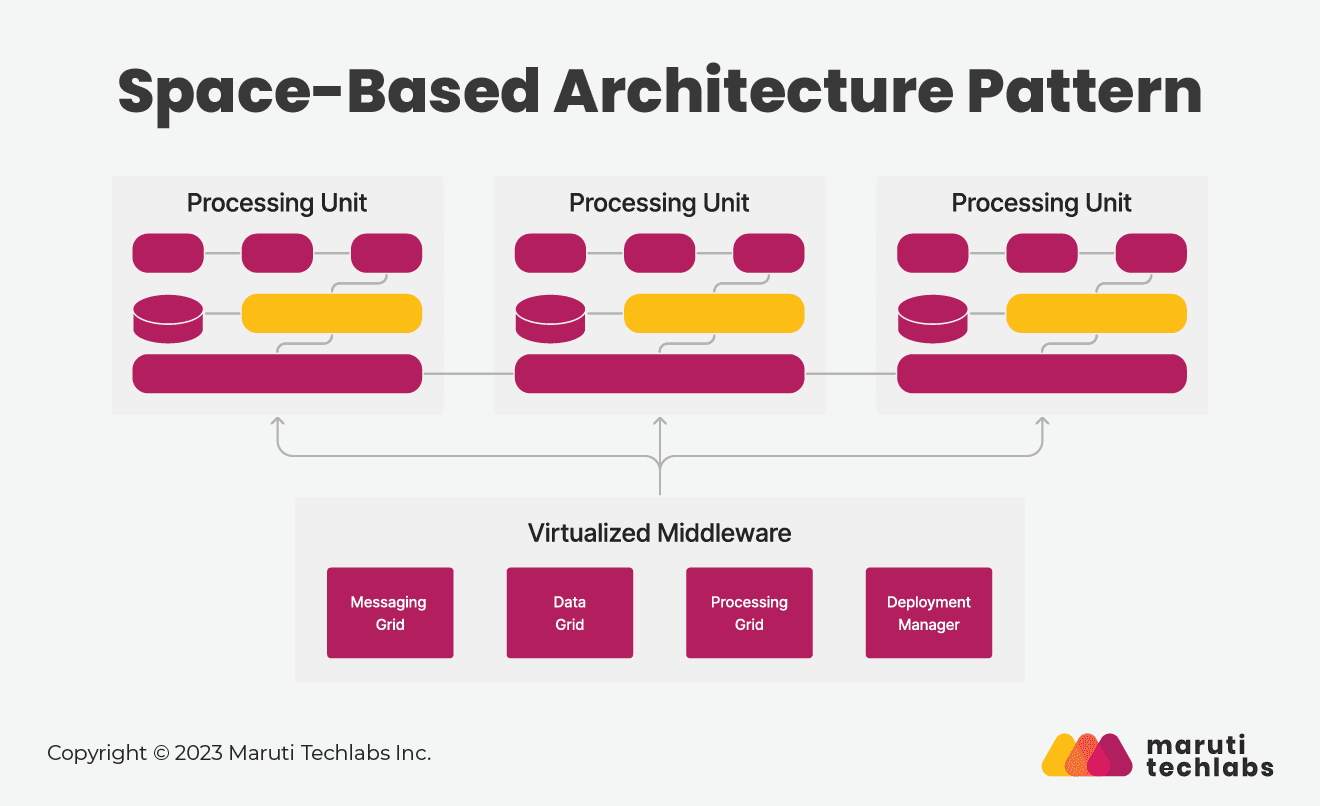
Space-based architecture is specifically designed to handle high loads and unpredictability. It is suitable for achieving linear scalability and high performance. This architecture pattern helps avoid functional collapse under high load by splitting up the processing and storage between multiple servers.
The space-based pattern comprises two primary components –
- Processing Unit: This unit contains web-based components and backend business logic.
- Virtualized Middleware Component: It contains elements that control data synchronization and request handling.
Usage of Space-Based Architecture Pattern
- Software systems with a large user base and high load of requests.
- Applications that require scalability and concurrency.
- Handling high-volume data like clickstreams and user logs.
- Building e-Commerce or social websites.
Advantages of Space-Based Architecture Pattern
- Quick response and high performance.
- High scalability and no dependency.
- Easier to develop, test, deploy, and evolve the system.
- Easy handling of complex business logic.
Disadvantages of the Space-Based Architecture Pattern
- Caching the data can be challenging.
- Added complexity to the system.
- Communication between them can be challenging.
- Requires careful planning and coordination.
Client-Server Architecture
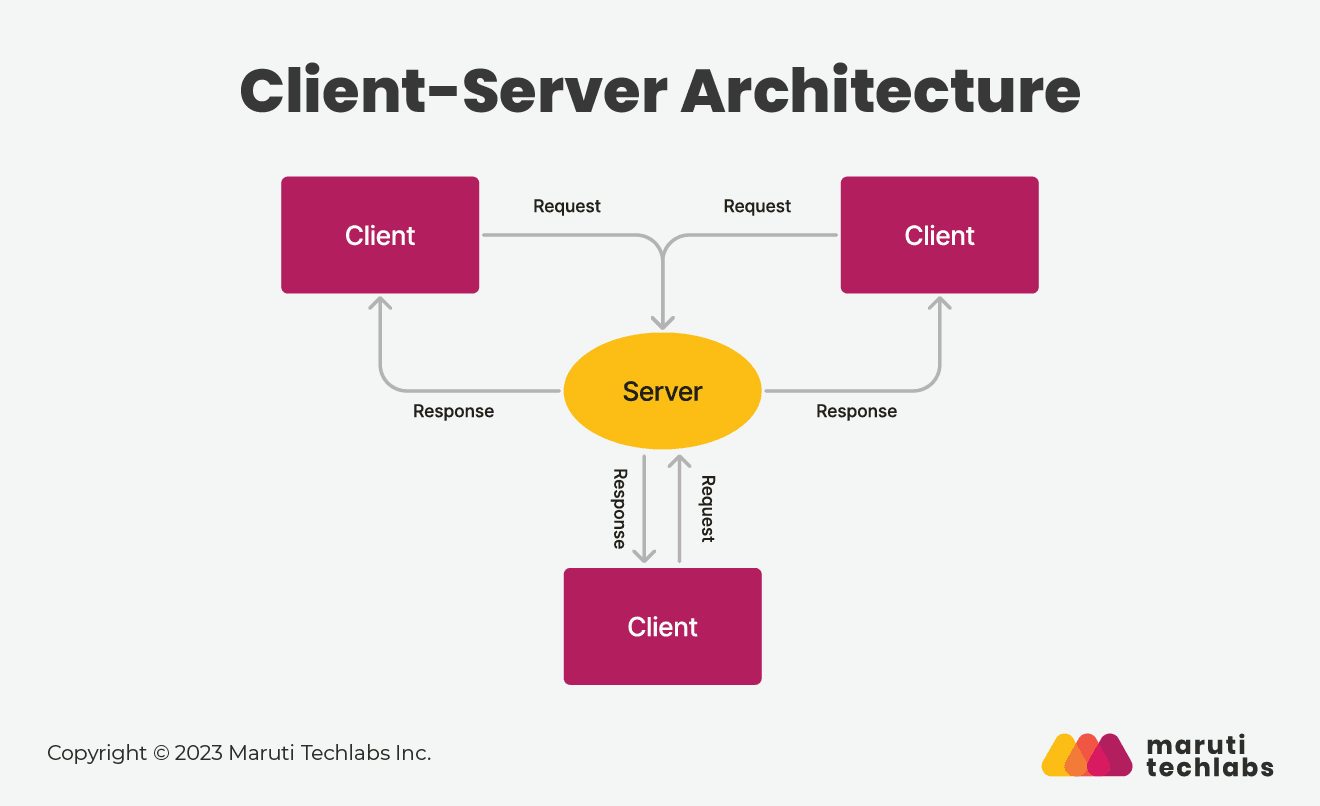
A client-server architecture is a distributed structure with two main components: the client and the server. The client represents the user interface part of the system, while the server is responsible for processing, storing, and managing data and business logic. It may also have a load balancer and network protocols. This architecture facilitates easy communication between the client and the server, which may or may not be on the same network.
Here is how this architecture works:
- The client sends a request via a network.
- The network accepts and processes the user's request.
- The server hosts, manages and delivers the reply to the client.
Usage of Client-Server Architecture
- Email is a prominent example of a client-server pattern.
- Online banking, the World Wide Web, file sharing, and gaming apps.
- Real-time services like telecommunication apps.
- Applications that require controlled access.
Advantages of Client-Server Architecture
- Easier to share, store, and operate on files.
- Improved data organization, security, and management.
- Device management is more effective.
- Less maintenance cost and easy data recovery.
- Brings a high level of scalability, organization, and efficiency.
- It is flexible as a single server can serve multiple clients, or a single client can use multiple servers.
Disadvantages of Client-Server Architecture
- The server is vulnerable to Denial of Service (DoS) attacks, phishing, and Man in the Middle (MITM) attacks
- In the event of server failure, users may lose all their data.
- Too many client requests can overload the server, causing service outages, crashes, or slow connectivity.
- Requires regular maintenance, which can be an ongoing cost.
Master-Slave Architecture
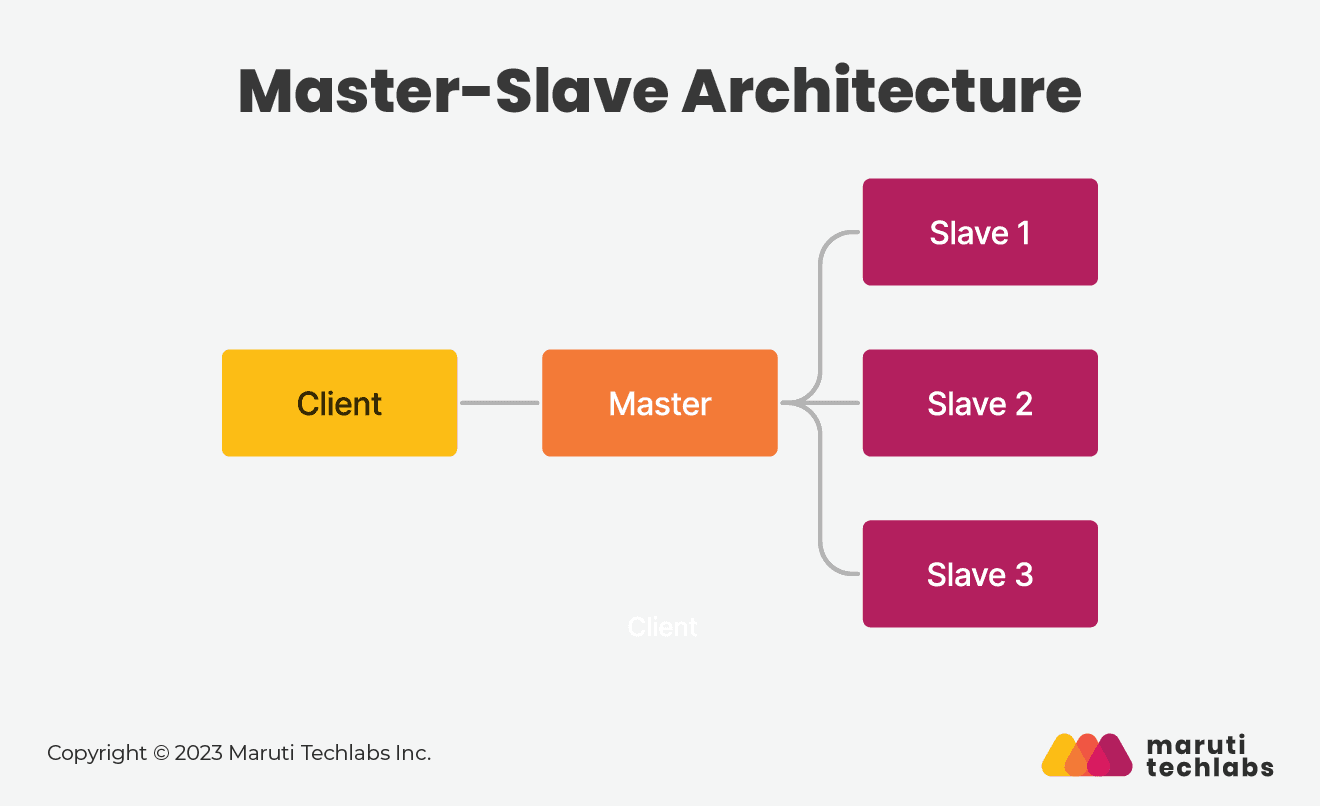
The master-slave architecture is one of the oldest and simplest architectures. This architecture has one primary database called the 'master' and several secondary databases called 'slaves'.
The master database is the primary storage where all the writing operations occur. It acts like a central coordinator, responsible for distributing tasks, managing resources, and making decisions. The data from the master database is cached into multiple slave servers. The slave servers cannot update or change the data and only handle reading operations.
This architecture effectively enhances reliability, accessibility, readability, and data backup. Imagine multiple requests hitting a single database at the same time. It can quickly get overburdened, resulting in slow processing or even crashing. A master-slave architecture pattern is the perfect solution in this scenario.
Usage of Master-Slave Architecture
- It is widely used in a distributed computing system.
- This architecture improves scalability and fault tolerance in database replication.
- Data transmission
- Robotics systems
- High-traffic websites
- Operating Systems that may require a multiprocessors compatible architecture.
Advantages of Master-Slave Architecture
- Provides reliable backups - Live data is replicated to all the slave databases automatically. Thus, data remains intact even if the master database fails.
- Easy scaling - The data load is split across numerous databases. This helps with the easy scaling of your application.
- High workload - The slave nodes help read the data while the master node pushes new updates.
- Performance - Data fetching becomes extremely fast because of the distributed load.
Disadvantages of Master-Slave Architecture
- Asynchronous replication may sometimes fail, leading to no data backup.
- Writing operations are hard to master and scale.
- If a master fails, a slave should be pushed to replace the master.
- A binary log has to be read each time data is copied. Each slave adds load to the master as the binary log has to be read before copying data to the slave nodes.
Pipe-Filter Architecture Pattern
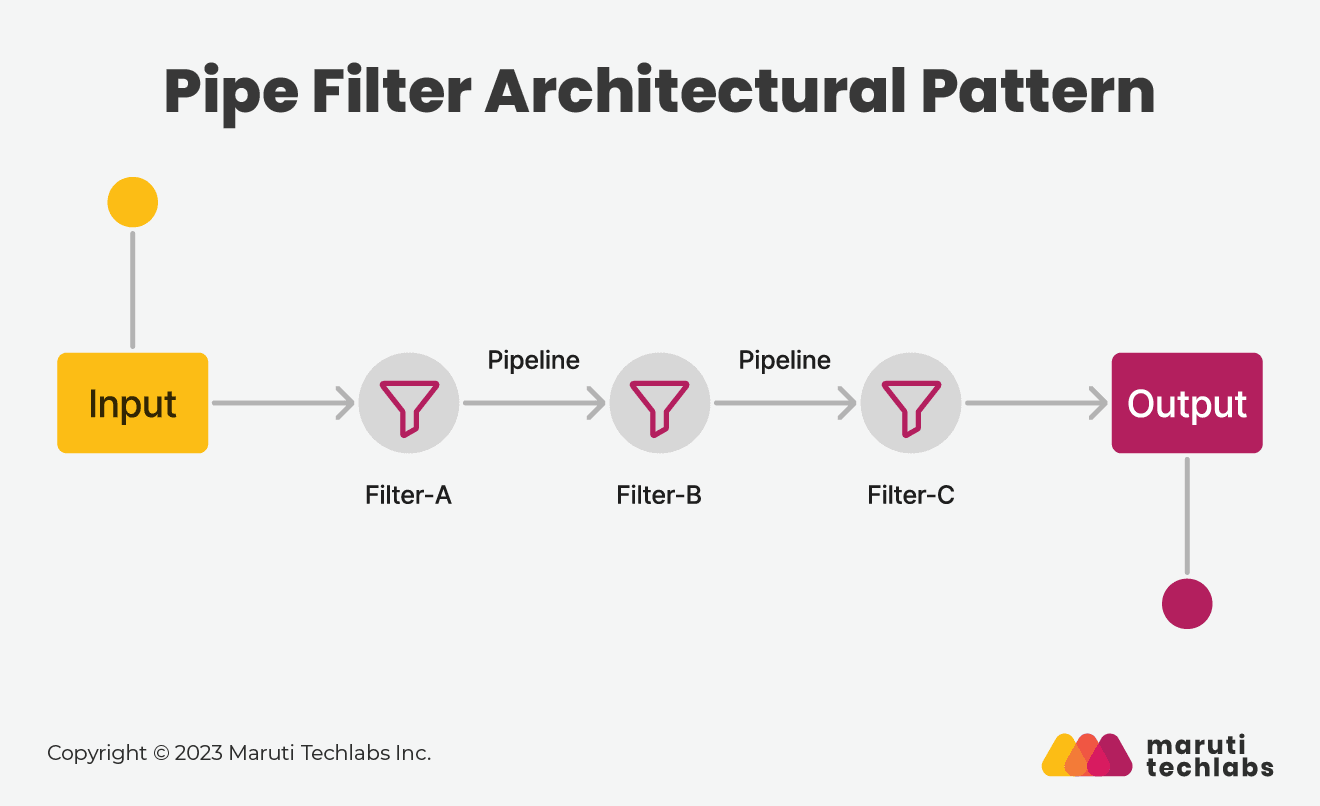
Pipe and filter is a simple architectural style that breaks down complex processing into a series of simple, independent components that can be processed simultaneously. The system consists of one or more data sources.
The key components of the pipe-filter architecture are:
- Filters: Filters are processing components designed to perform a specific operation. They perform data transformation, filtering, sorting, validation, or aggregation tasks.
- Pipes: Pipes connect one filter's output to the next filter's input in the pipeline. They provide a unidirectional flow of data between filters.
Each data source is connected to the data filters via pipes. The pipe pushes the data from one filter to another. The filters process the data as per pre-defined instructions. The data stream follows a unidirectional flow where the result of one filter becomes the input for the next filter. The final output is received at a data sink.
Usage of Pipe-Filter Architecture Pattern
- Data transformation and ETL
- Image and signal processing
- Data analytics and stream processing
- Electronic data interchange and external dynamic list
- Development of data compilers used for error-checking and syntax analysis.
- Log analysis
- Compilers
- Data integration and message processing
- Data compression and encryption
Advantages of Pipe-Filter Architecture Pattern
- Loose coupling of the components enables easy development, testing, and maintenance.
- The pipeline structure enables parallel processing and scalability.
- Filters are self-contained and independent components.
- Changes in the filters can be made without modifications to other filters.
- Each filter can be called and used over and over again.
- Filters can be combined to create different pipelines based on the system's requirements.
Disadvantages of Pipe-Filter Architecture Pattern
- There may be a data loss between filters.
- The slowest filter limits the performance and efficiency of the entire architecture.
- Less user-friendly for interactional systems
- Not appropriate for long-running computations.
- Failure of a filter may result in Idempotence.
Broker Architecture Pattern

The broker architecture pattern provides a loosely coupled, scalable solution for integrating multiple components in a distributed system. It facilitates the exchange of information among different software components by using a central broker. The broker pattern has three major features: Clients, servers, and brokers.
When clients raise a request, the broker redirects them to a suitable service category for processing. The individual components can interact through remote procedure calls. A broker coordinates communication, such as forwarding requests, transmitting results, and handling exceptions.
Here's a basic overview of how the broker architecture pattern works:
- Clients: Clients are components that generate messages or events.
- Broker: The broker is a central component that distributes them to the servers.
- Servers: Servers are subscribed to the broker specifying the types of messages they want to receive.
Usage of Broker Architecture Pattern
- E-commerce apps can use this pattern to notify the components about events such as new orders, inventory updates, or user actions.
- In a microservices-based system, this pattern can provide an efficient way to handle inter-service communication.
- In the integration of heterogeneous systems, broker patterns can be used to bridge the communication gap.
- The Broker pattern is suitable for building scalable and distributed applications.
Advantages of Broker Architecture Pattern
- Loose coupling enables flexibility in modifying components without affecting the overall system.
- The broker enables asynchronous communication between clients and servers.
- This pattern makes it easier to scale the system horizontally.
- The pattern supports monitoring and auditing capabilities.
- Using a central message broker enables fault tolerance and resilience in the system.
Disadvantages of Broker Architecture Pattern
- Requires standardization of services
- This may result in higher latency.
- It may require more effort in deployment.
- Communication can be more complex.
How Maruti Techlabs Implemented an Event-driven Microservices Architecture for a Car Selling Company
Maruti Techlabs successfully tackled a challenging project for a leading US-based used-car selling platform by implementing an event-driven microservices architecture. As their application evolved, scaling different software components became a huge challenge. With the increasing load, their existing system became prone to crashes and slowdowns.
Our engineering team undertook the challenge of migrating the fully-functional application from a monolithic architecture to event-driven microservices using Docker and Kubernetes. Given the complex structure of the existing application, the technical architects created an architectural design that outlined how each microservice would be set up to scale using Kubernetes.
The implementation of event-driven microservices enabled Uber scaling and independent deployments. Each product team could function with this architecture as a self-reliant autonomous team. Every microservice is self-reliant and has fault tolerance built in.
Results after implementing Event-Driven Microservices -
- The previous system could only scale up to a specific limit (e.g.1000, offers at a time and could not handle high traffic during peak season). With the new architecture, they can now handle many requests without breaking the user experience.
- Teams for each product module are more independent and can deploy their own APIs without relying on other teams. This makes selective scaling of services possible.
- This decoupling allowed easier maintenance, updates, and the introduction of new services without impacting the entire system. This flexibility enabled rapid development, deployment, and adaptation to changing business requirements.
- The new architecture made load-balancing and traffic routing easier and more effective. Process isolation has also enabled easy management of services.
Conclusion
Software architecture patterns provide proven solutions to common design challenges. Each architectural pattern comes with its unique usage, advantages, and shortcomings. For example, layered architecture provides modularity and separation of components, while microservices enable flexibility and scalability in distributed systems. The client-Server pattern allows for a clear separation of responsibilities, and the Broker pattern facilitates loose coupling and asynchronous communication.
Each architectural pattern offers a structured approach to building complex software systems. They act as a roadmap for creating well-structured software systems. However, gaining a deeper understanding of these architectural patterns is important to building robust, scalable, and maintainable systems.
At Maruti Techlabs, our pride lies in the expertise of our engineers, possessing in-depth knowledge of architectural patterns. They bring years of experience adopting the best architectural approach for your software. We have successfully migrated several legacy systems from a monolithic architecture to microservices in a step-by-step manner that ensures zero disruptions.
Understanding the significance of selecting the appropriate architectural pattern is crucial for businesses. Our consultations have a proven track record of helping companies adopt the right software architecture for their software applications, facilitating a better overall user experience.
We ensure your software is built on a solid foundation by conducting a detailed SWOT analysis of the existing system or processes to understand and identify the right software architecture pattern that best addresses your needs. By incorporating the right pattern and tailoring it to meet your specific needs, we build software that stands the test of time and supports the ever-changing demands of the digital landscape.
As your software product development services partner, we can assist you in determining the right software architecture pattern to address your unique business needs.
FAQs
1. What is an architectural pattern?
An architectural pattern is a reusable solution addressing a recurring software architecture design problem. It provides a structured approach to organizing a software system's components, modules, and interactions. Different software architecture patterns are designed to meet specific system requirements.
2.What is the importance of software architecture patterns?
Software architecture patterns are powerful tools for developing robust, scalable, and adaptable software systems. It provides a higher-level abstraction that promotes loose coupling among the components. This results in better modularity, flexibility, and high performance in a system.
3.What are the main architectural patterns?
The most well-known software architectural patterns include Layered Architecture, Microservices, Client-Server, Model-View-Controller (MVC), and Event-Driven Architecture. Each pattern addresses specific design challenges and offers advantages regarding separation of concerns, scalability, modifiability, and system organization.



